
By the spring of 1951, most of the equipment at Barnet was ready for transporting to St Leonards Promenade, Hastings. So Claude Lane and his working parties set off each weekend to do the preparation work before track laying could go ahead. The first thing to be attended to was the small building on the side of the Bathing Pool. This had previously been used in 1947-48 as an engine shed for the 10 1/4 inch gauge miniature steam railway that operated along the sea front. The height of the building was 3 feet too low for tramcars so it had to be reconstructed. The next step was the laying of track in the depot and out to a loading point for passengers at the start of the promenade. This section was laid with the portable track and points that had been used at the garden fetes. The overhead power was to be fed out from the tram shed so a set of traction batteries were installed along with a Westinghouse 72 volt commercial charger unit. By the third week of April a delivery of 14 lbs flat bottom rail had been delivered from the suppliers, this meant that the main work could commence that weekend. By Saturday morning the weather was looking great and every body was full of enthusiasm and ready to go. Over the next week work progressed at a rapid pace with traction pole installation overtaking the track laying. When viewed from the Bathing Pool it looked as if the traction poles stretched in to infinity. With a date set for Whit Weekend for the opening of the Tramway the pressure was on. The bracket arms and insulators were fitted to the traction poles; the overhead line was fed through and secured at the end of the line. With most of the construction completed it was time to deliver one of the trams so as to test the system. The following week Claude Lane was taking delivery of a brand new Morris J series van with tow bar. So he decided he would use the new van to tow the trailer with No23 from Barnet to Hastings. He set off on the Friday afternoon and the weather was atrocious by the time he arrived at Hastings it was so bad the only thing he could do was to get No23 into the depot as quick as possible and get to his lodgings and get to bed so as to be ready for the next morning. Saturday turned out to be a far better day and No23 took to the tracks and testing went ahead without any real problems. |
||
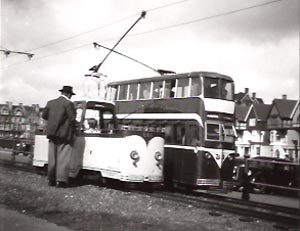 |
1951. |
|
1951. No.23 on journey to the bathing Pool terminus, Hastings Promenade. |
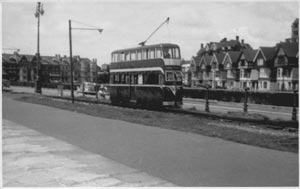 |
|
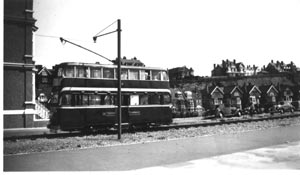 |
1951. |
|
The great day arrived. The Lord Mayer, Alderman J. D. Cooper, opened the tramway on Saturday 12th May 1951 with the switching on ceremony at 2.30pm A price of a ticket was 3d for a single journey and 6d for a return. During that summer the tramway was a great success and brought fun and happiness to children and adults alike. It was hoped that the tramway would continue for many years to come, but it was not to be. A group of local residents complained to the council that the traction poles were unsightly and spoilt the view. Others said it was too noisy and one person complained that the trams made the teacups rattle on the tables in the hotel. By late summer a partition was sent to the Council, signed by over 40 residents demanding that the tramway should be removed. This was to sound the end of operations in Hastings. Realising the fragile situation he was in led him into looking around the other coastal resorts. While visiting the Llandudno and Colwyn Bay Tramway he heard that a miniature steam railway had ceased operating in a fair ground in Rhyl and that land was up for lease. Claude Lane pursued the situation and negotiated a two year lease from Mr Twigdon the fairground proprietor. |
||
1951. At the Bathing Pool Terminus, Hastings Promenade. |
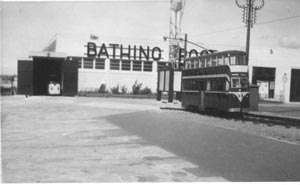 |
|
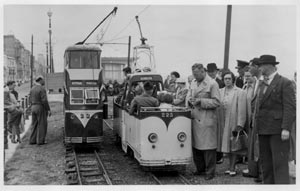 |
1951. Car.225 preparing to depart the terminus. |
|
1951. No.23 and 225 on the passing loop. Hastings Promenade. |
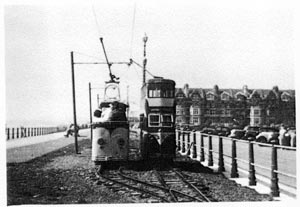 |
|
At the end of the summer season at Hastings, car No23 and Boat car 225 Were returned to Barnet Works and eventually all the traction poles and track followed on later. This little tramway was loved by local children and holidaymakers and many of those children who are now grown up, still remember the little trams that only operated at St Leonards for one season. Back at the works in Barnet North London, work was progressing as they prepared for the big move to North Wales. Double deck tram No23 had a modification to both ends. With new panelling and improved headlights it looked more like its prototype (Llandudno and Colwyn Bay No23 Tramcar) the modification also gave more space for the driver to enter his cab without banging his knee. Both No23 and Boat car No225 were given a full service and treated to a repaint so as to look smart for the start of the new season. |
||
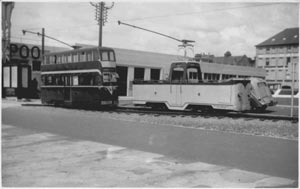 |
1951. No.23 and 225 awaiting passengers at the Bathing Pool terminus. |
|
1951. Driver preparing for departure as parents see to their children. |
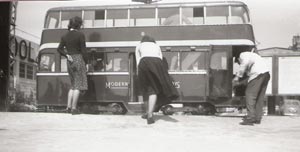 |
|
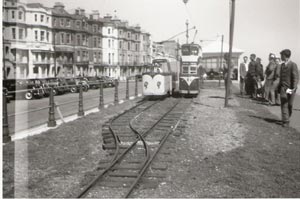 |
1951. Parked up at the Terminus. |
|
1951. Claude Lane driving Boat Car. 225. |
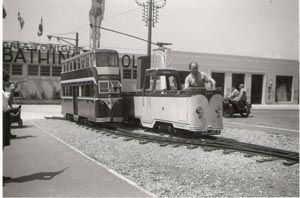 |
|
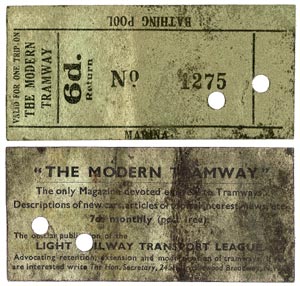 |
Front and back of the only known surviving Modern Tramways ticket from Hastings. Found between the bogie bolster and the sweep plates during restoration. | |
Track plan for Hastings Sea Front. |
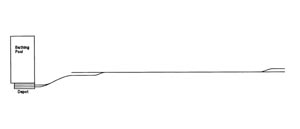 |
|
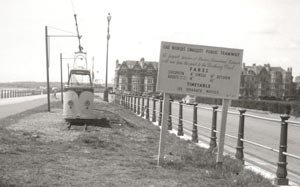 |
The company noticeboard declares this to be the World's smallest public tramway. | |
Worm's eye view of 23. |
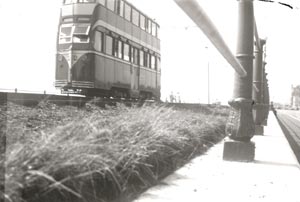 |
|
